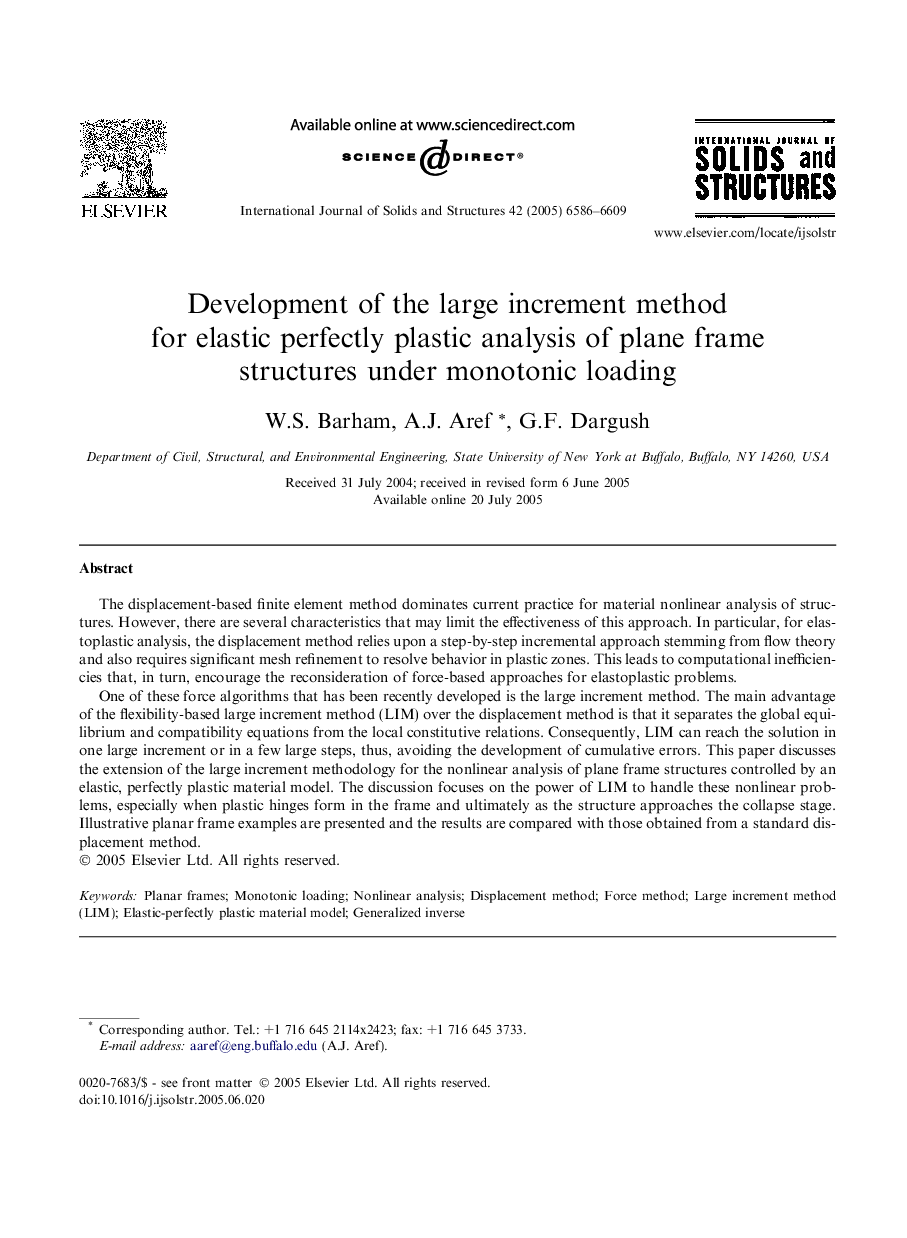| Article ID | Journal | Published Year | Pages | File Type |
|---|---|---|---|---|
| 280285 | International Journal of Solids and Structures | 2005 | 24 Pages |
The displacement-based finite element method dominates current practice for material nonlinear analysis of structures. However, there are several characteristics that may limit the effectiveness of this approach. In particular, for elastoplastic analysis, the displacement method relies upon a step-by-step incremental approach stemming from flow theory and also requires significant mesh refinement to resolve behavior in plastic zones. This leads to computational inefficiencies that, in turn, encourage the reconsideration of force-based approaches for elastoplastic problems.One of these force algorithms that has been recently developed is the large increment method. The main advantage of the flexibility-based large increment method (LIM) over the displacement method is that it separates the global equilibrium and compatibility equations from the local constitutive relations. Consequently, LIM can reach the solution in one large increment or in a few large steps, thus, avoiding the development of cumulative errors. This paper discusses the extension of the large increment methodology for the nonlinear analysis of plane frame structures controlled by an elastic, perfectly plastic material model. The discussion focuses on the power of LIM to handle these nonlinear problems, especially when plastic hinges form in the frame and ultimately as the structure approaches the collapse stage. Illustrative planar frame examples are presented and the results are compared with those obtained from a standard displacement method.
